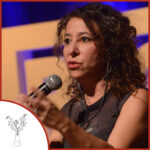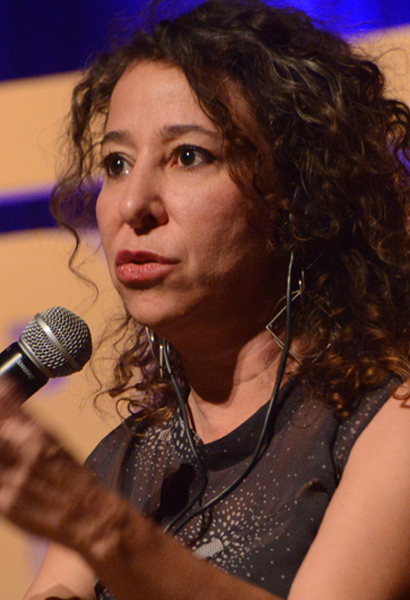

Birth: 1967
Specialty: Theoretical Cosmology
Major Contributions:
Author of How the Universe Got Its Spots: Diary of a Finite Time in a Finite Space
Winner of the 2006 PEN/Robert Bingham Fellowship for Writers
Named a Guggenheim Fellow in 2012
Recipient of the 2004 Kilby Young Innovator Award
Image: Fronteiras do Pensamento (CC BY-SA 2.0)
Many people love to marvel at the beauty of the cosmos that is observable with our eyes – but what about the beauty that is observable with our ears? Dr. Janna Levin says that the universe has a soundtrack that is played on space itself.
According to Levin space can wobble like a drum and ring out with the evidence of dramatic stellar events as they occur. Much of her research has been on black holes, dark objects on a dark background, which are impossible to directly detect visually. It is the interactions of black holes that Levin and her group are attempting to track as these objects move around each other, eventually crashing into one another in spectacular fashion.
It is theorized that when these black holes begin interacting, they produce gravitational waves that will act like mallets on the fabric of space-time and play it like a drum. Levin’s group has used mathematical modeling to develop predictions on what these interactions would sound like, which she shared as part of a TED Talk in 2011. The problem with these sounds is that they are so faint it was impossible for us to hear this squeezing and stretching of space. Well, that was until 2015 when the LIGO detector was able to observe some of these gravitational waves. Levin’s third book Black Hole Blues and Other Songs from Outer Space was published in March 2016 and details the history of the LIGO and its recording of gravitational waves.
Beyond her work with black holes Levin also investigates the possibility that our universe is not as infinite as current scientific thinking proposes. In her book How the Universe Got Its Spots she uses geometry, topology, chaos and string theories to show a pattern of hot and cold spots in the universe that are the leftovers from the big bang that one day might reveal the size and shape of the cosmos.
In her most recent book, Black Hole Survival Guide, Levin focuses on making the science of black holes not only understandable to the non-scientist but helps us imagine encountering those mysterious objects that shape our universe.
Levin is a professor of physics and astronomy at Barnard College of Columbia University in Manhattan and a celebrated author and speaker.
Written by Angela Goad
Sources:
Columbia University: Janna Levin
TED: The Sound the Universe Makes
See Also:
Michael Shermer with Dr. Janna Levin — Black Hole Blues (Science Salon # 5)
Introductions Necessary: Gabriela Gonzalez
